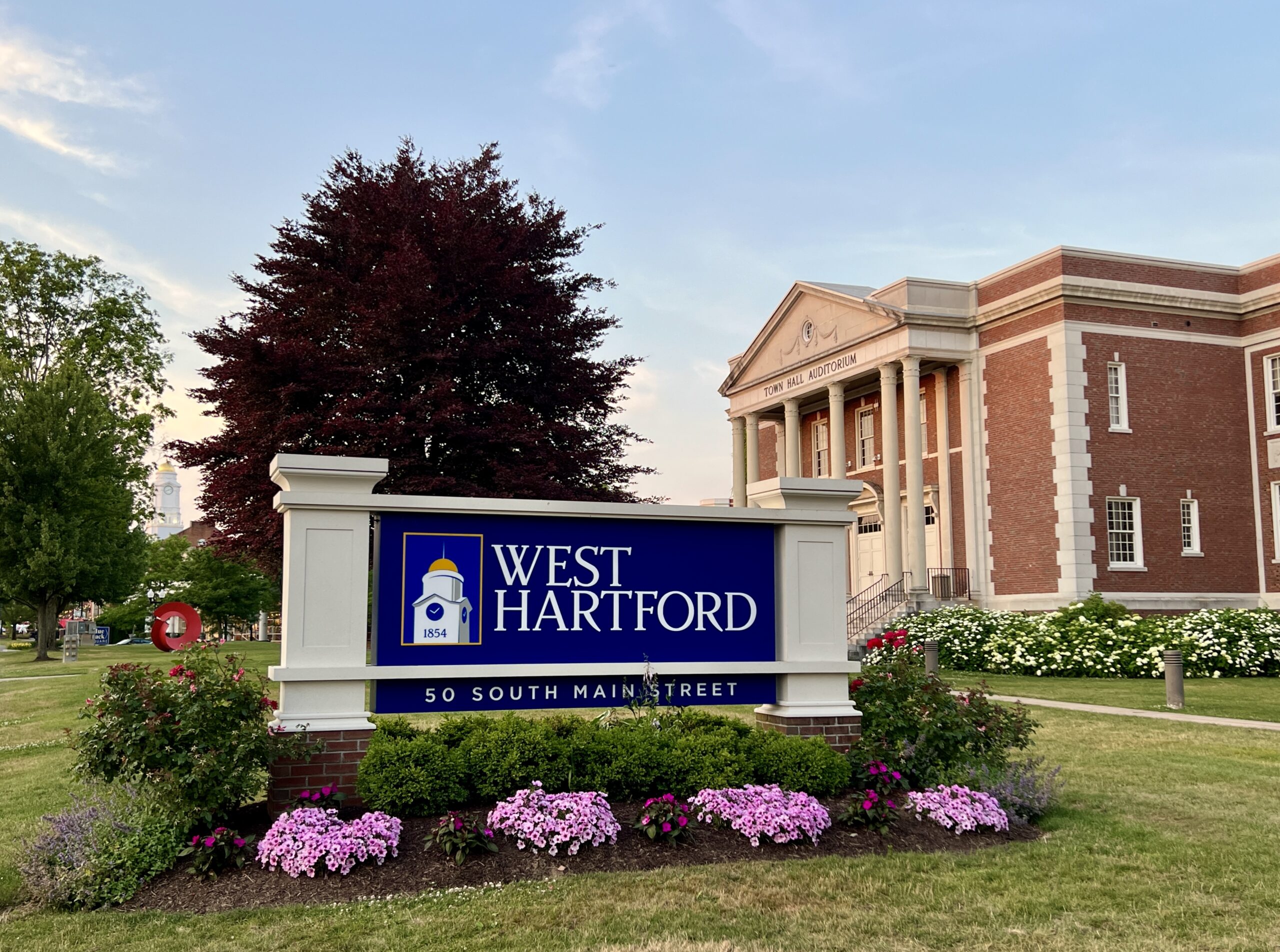New York
Oppenheimer Came From Manhattan. That Project Started Here, Too.

Good morning. It’s Wednesday. Today we’ll look at what the blockbuster film “Oppenheimer” mostly skipped over — the Manhattan Project’s connections to New York City.
You could watch “Oppenheimer” and wonder if the Manhattan Project had anything to do with, well, Manhattan. Even at three hours, “Oppenheimer” couldn’t put everything on the screen about the wartime scramble for nuclear weapons.
But the Manhattan Project wasn’t only about New Mexico, where J. Robert Oppenheimer presided over the birth of the atomic bomb. At its height, it is said to have employed about 5,000 people in New York.
Why the Manhattan Project?
It wasn’t called the Manhattan Project because Oppenheimer was a product of Manhattan, although he was. More about that in a moment.
It was christened the Manhattan Project by someone else with some New York connections, Colonel Leslie Groves (Matt Damon in “Oppenheimer”). But where he came from and where he had been educated had nothing to do with it. (He had been born in Albany — although he grew up on one Army post after another, as the family trailed his military-chaplain father — and graduated from the United States Military Academy at West Point.)
“It was Groves who decided that the first location of this project would be Manhattan — ‘We’ll park it there for the time being,’” said Robert Norris, a historian of the atomic age and the author of “The Manhattan Project” (2007).
The first headquarters were in an office building across from City Hall Park in Lower Manhattan where the Corps of Engineers already had an outpost. Other important Manhattan Project work was done by scientists who were given space in the offices of a front company in the Woolworth Building, at 233 Broadway.
One name that was suggested for the new, supersecret effort was a mouthful that Groves worried would get noticed — Laboratory for the Development of Substitute Materials. Groves opted for plain vanilla, calling it the Manhattan Engineer District as “a way to make it sound normal,” Norris said. “No one would be suspicious of what was going on.”
Even that was too long to be conversational, and the endeavor became known as the Manhattan Project.
The M.E.D. was a district with no boundaries. Groves soon moved its headquarters from Manhattan to Oak Ridge, Tenn. “But he ran things out of Washington,” Norris said.
Oppenheimer’s roots
Oppenheimer himself was a product of the Upper West Side: His parents lived at 250 West 94th Street when he was born in 1904. Later they moved into a new building at 155 Riverside Drive, at West 88th Street, steps from the high-columned Soldiers’ and Sailors’ Monument.
“Maybe opulent is not the right word, but they were wealthy, well-off and privileged,” Kai Bird — who with Martin J. Sherwin wrote “American Prometheus: The Triumph and Tragedy of J. Robert Oppenheimer,” on which “Oppenheimer” was based — told me. “They had three maids, or maybe a cook and two maids in that apartment.”
It was on the next-to-the-top floor, 10 rooms with views of the Hudson River (and three bathrooms and 16 closets). On the walls were a Picasso, a Renoir and three van Goghs, along with a Rembrandt etching. Bird told me they had paid $12,000 for one of the van Goghs, not quite $205,000 in today’s dollars.
They had other status symbols. One was a Packard. Another was a chauffeur to drive it. They also had a weekend house in Bay Shore, on Long Island, and, when Robert turned 16, a 28-foot sloop. In “American Prometheus,” Bird and Sherwin described him as an impetuous seaman who “loved sailing in summer storms, racing the boat against the tides through the inlet at Fire Island and straight out into the Atlantic.”
Oppenheimer’s father, Julius, had done well in the textile business. Julius “had an eye for color and in time acquired a reputation as one of the most knowledgeable ‘fabrics men’ in the city,” according to “American Prometheus.” Oppenheimer’s mother, Ella, also had an eye: She was a painter who had spent a year in Paris as an art student and later taught at Barnard College.
Oppenheimer came from a family of first-and second-generation immigrants. His father “arrived in this country as an immigrant and was not well-off,” Bird told me. Julius came to the United States later than most of the socially and financially powerful German Jewish families that Stephen Birmingham wrote about in “Our Crowd,” he said.
“But he very quickly became successful, worked his way into that Upper West Side society — the big apartment, the chauffeur and all that,” Bird said.
The family belonged not to a synagogue but to the Ethical Cultural Society. Oppenheimer himself attended its school on Central Park West.
Some things at the building on Riverside Drive have changed since Oppenheimer lived there: The apartments were divided up after World War II, sandwiching five onto a floor where there were originally only two. One thing has not changed: The building is still a rental, unlike others in the neighborhood that went co-op decades ago.
The superintendent, Joe Gugulski, sighed as he told me that the building probably was more famous from its recurring cameos on the sitcom “Will & Grace.”
“Sadly or whatever, we had more questions about that than Oppenheimer,” he said. “In the age of sitcoms, shows like ‘Will and Grace,’ they get more publicity than the life of the scientist who basically transformed science and possibly the outcome of the world.”
Columbia University
Much of the early work on the Manhattan Project took place at Columbia University, where the faculty included the physicist Enrico Fermi (Danny Deferrari in “Oppenheimer”). But after the Pearl Harbor attack in December 1941, he moved to the University of Chicago — to be safer in case of an attack from the Atlantic, according to one Columbia account.
Fermi had not been on hand in January 1939 when Columbia posted a breakthrough (he had gone to a conference in Washington). Scientists working in Pupin Hall on the Columbia campus confirmed reports they had from European counterparts. “Believe we have observed new phenomenon of far-reaching consequences,” Dr. John Dunning, one of the physicists who was involved, wrote in his diary after an experiment that had succeeded in splitting uranium atoms.
Politics
More Local News
Arts & Culture
METROPOLITAN diary
Repaid
Dear Diary:
Five years ago, my partner took me to an Armenian church in Lower Manhattan to explore his ancestry. The priest was very proud that his loyal congregation came from all over the metropolitan area, and my partner left a $100 bill in the donation plate.
From there, we walked to MacDougal Street for a delicious Italian meal and a bottle of wine. The two people seated next to us were from England and California.

New York
N.Y.C.’s Mayoral Candidates Spent Millions on TV Ads. What Are They Saying?

Estimated spending on
broadcast ads that have aired
$1.1 million
$4.3 million
The Democrats running for mayor in New York City and a super PAC supporting Andrew M. Cuomo are spending millions to reach potential voters, with much of the spending going toward commercials on broadcast television. A New York Times analysis of the broadcast ads that have aired so far, using data from AdImpact, explored the major themes highlighted by the candidates: crime and safety, President Trump, affordable housing and corruption.
Among the ads aired,
seven mention crime and safety
3 ads
Mr. Cuomo, the former governor, has been framing himself as a law-and-order candidate who will crack down on crime and improve public safety. Ads run by Fix the City, the super PAC backing Mr. Cuomo, have depicted New York as a city in chaos. One of its ads opens with images of police sirens, caution tape and subway riders fleeing a smoke-filled train.
“Crime is rampant,” says a voiceover in another pro-Cuomo ad, also paid for by Fix the City. That ad also references Mr. Cuomo’s “five-borough crime and affordability plan,” which would add “5,000 more cops” to the streets.
Other candidates took a subtler approach. Scott Stringer, a former city comptroller, said in his only broadcast ad to air so far that he would “put a cop on every train” and “hire more mental health workers.” An ad for Brad Lander, the current city comptroller, tied the idea of safety to Mr. Lander’s plan to “end street homelessness for the mentally ill.” An ad for Zohran Mamdani, the state assemblyman, simply said he would make New York a “safer city.”
Among the ads aired,
five mention President Trump
2 ads
Taking jabs at Mr. Trump and his administration could almost be considered a requirement for candidates running in a Democratic primary in a city where former Vice President Kamala Harris won about 70 percent of votes in the 2024 presidential election. Still, some of the ads that mention the president are more direct than others.
An ad for Mr. Stringer was among the most explicit: “We deserve a mayor who can get our city back on track and keep this schmuck out of our business,” Mr. Stringer says over a clip of Mr. Trump dancing at a rally, adding that he will “tell Trump where to stick it.”
Mr. Lander drives a large forklift around a junkyard in his broadcast ad and places cars into a crushing machine. One of the cars has the words “Trump & Musk” in large black letters across the side.
Other candidates made only passing swipes at the president. Some of the ads supporting Mr. Cuomo mentioned that he took on Mr. Trump as governor and will again as mayor, and an ad for Mr. Mamdani said he would stand up to Mr. Trump. Mr. Myrie’s broadcast ad did not mention Mr. Trump.
All ads mention affordable housing
3 ads
Every broadcast ad reviewed in the analysis mentioned housing at least once. In one ad, Mr. Mamdani likened Mr. Cuomo to the current mayor, Eric Adams, whose housing policies have been similar to the former governor’s, and whose popularity declined after he was indicted on fraud and corruption charges in 2024. The Trump administration later dropped the charges.
“Cuomo is running for Adams’s second term,” Mr. Mamdani said in the ad, adding that he will “take on bad landlords and greedy corporations.”
Mr. Adams and Mr. Cuomo are both moderates who have many of the same donors, including powerful real estate leaders, and both have supported housing policies that are in stark contrast to Mr. Mamdani’s. The mayor and former governor both oppose freezing increases for rent-stabilized apartments, for example, while one of Mr. Mamdani’s ads is devoted solely to his plan to freeze rent prices.
In ads for other candidates, housing is mentioned only briefly. An ad by Fix the City for Mr. Cuomo said he will “cut red tape for affordable housing and build 500,000 new units.” In Mr. Stringer’s ad, he said he will “turn vacant lots into affordable apartments.” Mr. Myrie’s ad says he has “the boldest plan to build affordable housing.”
Among the ads aired,
three mention corruption
0 ads
Several of the candidates mentioned corruption in their ads. In Mr. Lander’s ad, a second car is brought out to be crushed, this one symbolizing “corruption,” specifically as it relates to Mr. Cuomo.
“Andrew Cuomo spent $60 million of your money to defend himself in court. That’s corrupt,” a voiceover says as the car is brought to the crushing machine. “But Brad Lander fights corruption.”
In the ad in which Mr. Mamdani compares Mr. Cuomo to Mr. Adams, the candidate paints the former governor and mayor as the corrupt establishment, responsible for making the city unaffordable.
“Working people are being pushed out of the city they built, and it’s because corrupt politicians like Eric Adams and Andrew Cuomo have sold us out to billionaires and corporations, rigging the economy against us,” Mr. Mamdani says over a series of images that combine Mr. Cuomo’s face and quotes about the former governor from news articles.
Mr. Stringer defines corruption less precisely, mentioning that he “fought corruption” as comptroller. The three pro-Cuomo broadcast ads by Fix the City did not mention corruption, nor did the ad for Mr. Myrie.
Total spending on advertising,
including future broadcast spots
| Total spent | Broadcast share | |
|---|---|---|
|
Fix the City (pro-Cuomo super PAC) |
$8.1 million | 91% |
 Mamdani |
$3.0 million | 41% |
 Lander |
$2.3 million | 72% |
 Stringer |
$1.9 million | 83% |
 Myrie |
$1.7 million | 27% |
Spending on ads that have already aired on broadcast television, which this analysis focused on, is one slice of candidates’ overall ad spending. They have also purchased broadcast spots to air more ads in the future, as well as ads on other platforms like streaming television, satellite and internet. Broadcast was, however, a major focus for the candidates.
Fix the City, the pro-Cuomo super PAC, has spent the most on advertising by far, with 91 percent of its spending devoted to commercials on broadcast networks. (Mr. Cuomo’s campaign has not yet aired any of its own ads on broadcast television, according to AdImpact.)
By contrast, the campaign for Mr. Mamdani, which has become known for its savvy approach to social media, has spent just 41 percent of its advertising budget on broadcast, according to the AdImpact data. (Mr. Mamdani’s campaign has, however, spent more on broadcast than any other individual platform.)
One of the leading Democrats in the mayor’s race, Adrienne Adams, the speaker of the New York City Council, has not yet aired an ad on broadcast television. The candidate struggled to raise funds early in her campaign, but recently got an infusion of $2 million from the city’s fund-matching program, which the campaign said it would use for an aggressive ad blitz in the coming weeks before the June 24 primary.
New York
Are You Smarter Than a Billionaire?

Over the course of one week, some of the richest people in the world descended on New York’s auction houses to purchase over $1 billion of art. It might have played out a little differently than you would have expected.
Can you guess which of these works sold for more?
Note: Listed sale prices include auction fees.
Image credits: “Untitled,” via Phillips; “Baby Boom,” via Christie’s Images LTD; “Hazy Sun,” With permission of the Renate, Hans & Maria Hofmann Trust/Artists Rights Society (ARS), New York; via Christie’s Images LTD; “Petit Matin,” via Christie’s Images LTD; “Concetto spaziale, La fine di Dio,” Artists Rights Society (ARS), New York/SIAE, Rome; via Sotheby’s; “Baroque Egg with Bow (Orange/Magenta),” via Sotheby’s; “The Last Supper,” The Andy Warhol Foundation for the Visual Arts, Inc./Licensed by Artists Rights Society (ARS), New York; via Christie’s Images LTD; “Campbell’s Soup I,” The Andy Warhol Foundation for the Visual Arts, Inc./Licensed by Artists Rights Society (ARS), New York; via Christie’s Images LTD; “Miss January,” via Christie’s Images LTD; “Fingermalerei – Akt,” via Sotheby’s; “Grande tête mince (Grande tête de Diego),” Succession Alberto Giacometti/Artists Rights Society (ARS), NY; via Sotheby’s; “Tête au long cou,” Succession Alberto Giacometti/ARS, NY/Photos: ADAGP Images/Paris 2025; via Christie’s Images LTD; “Revelacion,” Remedios Varo, Artists Rights Society (ARS), New York / VEGAP, Madrid; via Christie’s Images LTD; “Le jardin nocturne,” Foundation Paul Delvaux, Sint-Idesbald – ARS/SABAM Belgium; via Christie’s Images LTD.
Produced by Daniel Simmons-Ritchie.
New York
Video: How a Mexican Navy Ship Crashed Into the Brooklyn Bridge

On Saturday, a Mexican Navy ship on a good will tour left a New York City pier bound for Iceland. Four minutes later, it crashed into the Brooklyn Bridge. [Spanish] “It’s falling!” [English] “No way!” Here’s what happened. The Cuauhtémoc had been docked on the Lower East Side of Manhattan for four days, open to visitors looking for a cultural experience. As the ship prepared to leave on Saturday night, a tugboat arrived to escort it out of its pier at 8:20 p.m. The ship’s bow, the front of the vessel, faced Manhattan, meaning it would need to back out of its berth into the East River. As the Cuauhtémoc pulled away from shore, the tugboat appeared to push the side of the ship, helping to pivot the bow south toward its intended route. The river was flowing northeast toward the Brooklyn Bridge and the wind was blowing in roughly the same direction, potentially pushing the ship toward a collision. Photos and videos suggest the tugboat was not tied to the ship, limiting its ability to pull the ship away from the bridge. The Cuauhtémoc began to drift north, back first, up the river. Dr. Salvatore Mercogliano, who’s an adjunct professor at the U.S. Merchant Marine Academy, told The Times that the ship appeared to be giving off a wake. This suggests its propellers may have been running in reverse, pushing it faster toward the bridge. The tugboat sped alongside the ship as it headed north, possibly trying to get in front of it and help the ship maneuver the other way. But it was unable to cut the ship off or reverse its course. All three masts crashed into the underside of the Brooklyn Bridge at approximately 8:24 p.m., four minutes after the ship had left the pier, causing the top sails to collapse. Crew members standing on the masts during the collision were thrown off entirely. Others remained hanging from their harnesses. A New York City patrol boat arrived about eight minutes after the collision, followed quickly by a fire department boat. Additional law enforcement and emergency medical services removed the wounded for treatment. According to the Mexican Navy, two of the 227 people aboard the ship were killed and 22 others were injured.
-

 Movie Reviews1 week ago
Movie Reviews1 week agoMOVIE REVIEW – Mission: Impossible 8 has Tom Cruise facing his final reckoning
-

 Politics1 week ago
Politics1 week agoTrump honors fallen American heroes, praises God in Memorial Day address: 'Great, great warriors'
-

 Politics1 week ago
Politics1 week agoTrump admin asking federal agencies to cancel remaining Harvard contracts
-

 Culture1 week ago
Culture1 week agoCan You Match These Canadian Novels to Their Locations?
-

 Politics1 week ago
Politics1 week agoHomeland Security chief Noem visits Netanyahu ahead of Jerusalem Day
-

 News1 week ago
News1 week agoHarvard's president speaks out against Trump. And, an analysis of DEI job losses
-

 News1 week ago
News1 week agoRead the Trump Administration Letter About Harvard Contracts
-

 Technology1 week ago
Technology1 week agoThe Browser Company explains why it stopped developing Arc















